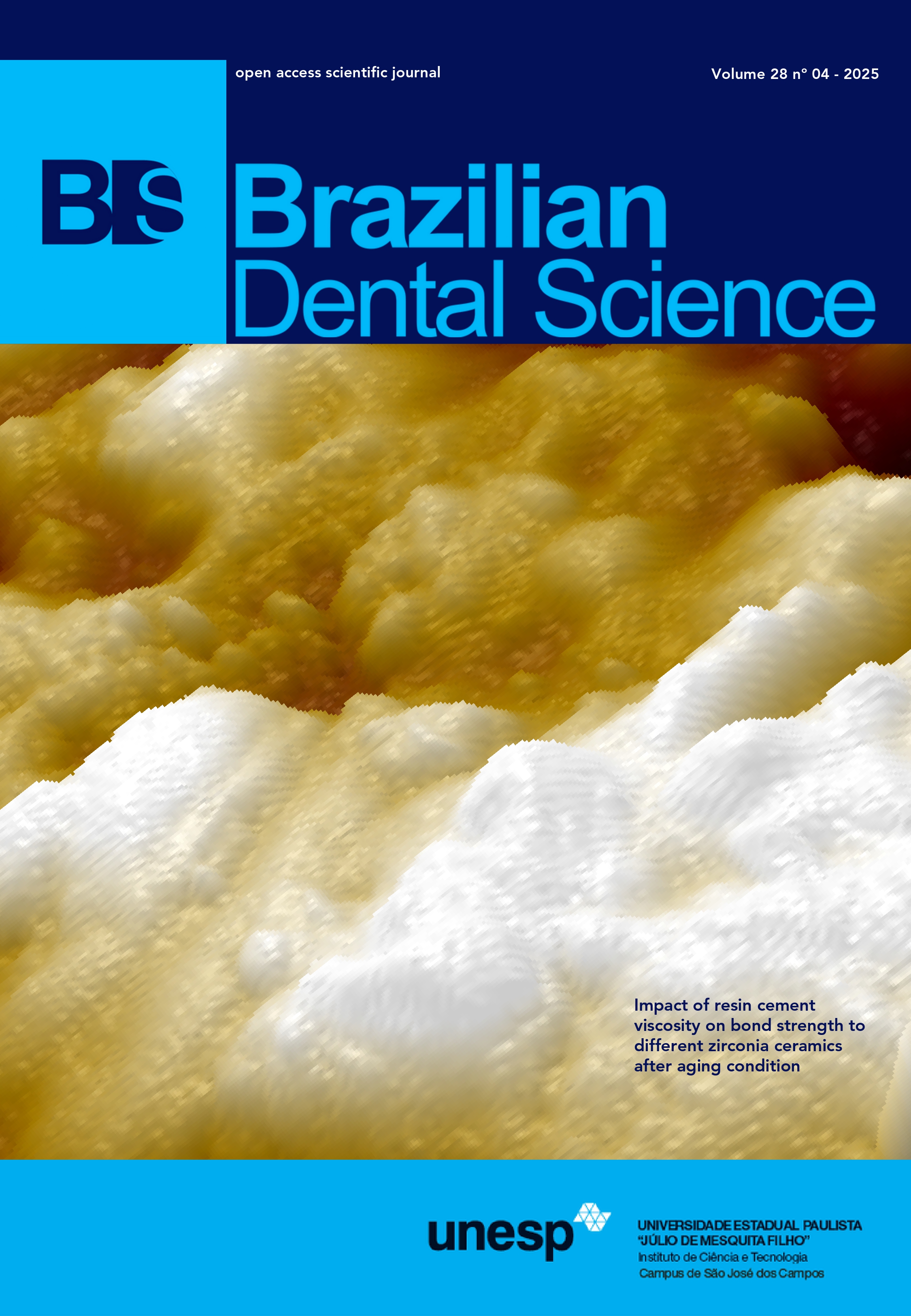Factors influencing self-reported tooth clenching/grinding in dental patients
DOI:
https://doi.org/10.4322/bds.2025.e4838Keywords:
Bruxism, Temporo-mandibular disorders, Tooth clenching, Tooth grinding, Tooth wearAbstract
Objective: This study evaluates the prevalence of self-reported tooth clenching and grinding among dental school patients and explores its associations with demographic and clinical factors. Material and Methods: Data from 14,643 patients at the University of Iowa College of Dentistry were analyzed. Descriptive statistics summarized demographic and clinical characteristics. Bivariate analyses, followed by multivariable logistic regression, were conducted to identify significant factors associated with self-reported clenching/grinding. Results: Of the participants, 54% reported tooth clenching/grinding. Significant factors associated with tooth clenching/grinding included age, gender, race/ethnicity, type of insurance, number of daily medications, substance abuse, and mental health disorders. Specifically, male participants reported 64% higher odds of experiencing self-reported tooth clenching/grinding compared to females. The prevalence of self-reported tooth clenching/grinding was also higher among those with substance abuse and mental health disorders, but the effects were smaller. Conclusion: A high proportion of dental school patients self-reported tooth clenching/grinding.
KEYWORDS
Bruxism; Temporo-mandibular disorders; Tooth clenching; Tooth griding, Tooth wear.
Downloads
Downloads
Published
How to Cite
Issue
Section
License
Copyright (c) 2025 Leonardo Marchini, Fang Qian

This work is licensed under a Creative Commons Attribution 4.0 International License.
Brazilian Dental Science uses the Creative Commons (CC-BY 4.0) license, thus preserving the integrity of articles in an open access environment. The journal allows the author to retain publishing rights without restrictions.
=================




























